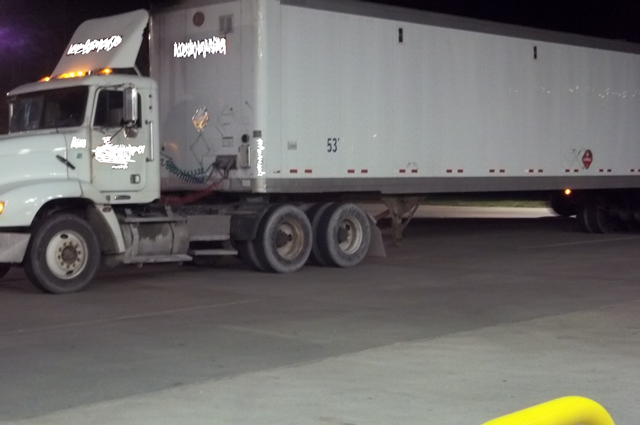We all make mistakes. But when it impacts compliance with the Hazardous Material Regulations (HMR) of the USDOT/PHMSA, a mistake can be costly and dangerous. And since hazardous materials in transportation are so frequently in public view, violations of the HMR can be detected by anyone familiar with the regulations. So…
What’s wrong with this picture?

The motor vehicle in the picture above is displaying the placard for Hazard Class 3 Flammable Liquid. However, it is placarded only on three sides (I drove around it and checked) but not on a side facing to the front.
Pursuant to the regulations of the USDOT/PHMSA, if placarding of a transport vehicle is required, then the placards must be placed, “…on each side and each end…” (49 CFR 172.504(a)); this means all four sides of a motor vehicle. Further, 49 CFR 172.516(a) requires the placards to be, “…clearly visible from the direction it faces…”, which is not the case for the front of this motor vehicle.
“But wait!” you say, “What about the front of the truck-tractor in the picture? Is the placard on the front bumper?” Unfortunately, my picture doesn’t show the front of the truck, but take my word, no placard was visible there either. Interestingly, in the case of a tractor-trailer combination, 49 CFR 172.516(b) allows for the placard to be displayed on the truck-tractor instead of or in addition to the placarding on the front of the cargo body to which the truck-tractor is attached. So, it would be OK if the placards were not on the trailer but instead were on the tractor-trailer. As I said however, this is not the case.
There’s another possible violation of the HMR on display here. Pursuant to 49 CFR 172.506, a shipper of a hazardous material is required to offer the proper placards to the carrier prior to departure (read about it here: Shipper of HazMat Must Offer Placards to the Driver). It’s impossible for me to tell if the carrier was offered the proper placards by the shipper, but if this becomes a violation, such interactions suddenly become very important.
Why does it matter? The importance of placards on a motor vehicle is their communication of the potential hazards of the HazMat inside the vehicle to everyone who may come in contact with it while in transportation: HazMat Employees, the general public, law enforcement (state or Federal), and of course, nosy training providers.
I’m not looking to get anyone in trouble here, that’s why I removed all identification marks from the vehicle. Keep in mind that I’m not the only one out there looking for violations of the HMR like this. If discovered by inspectors of the PHMSA or state agencies that enforce Federal regulations, violations such as this may result in significant fines, violations, missed deliveries, lost time, and frustration.
Daniels Training Services 815.821.1550 |
HazMat Employee training required by 49 CFR 172, Subpart H and available from Daniels Training Services is the way to avoid these violations and ensure the safe transportation of hazardous materials.
Contact me for your free HazMat Employee Training consultation.
